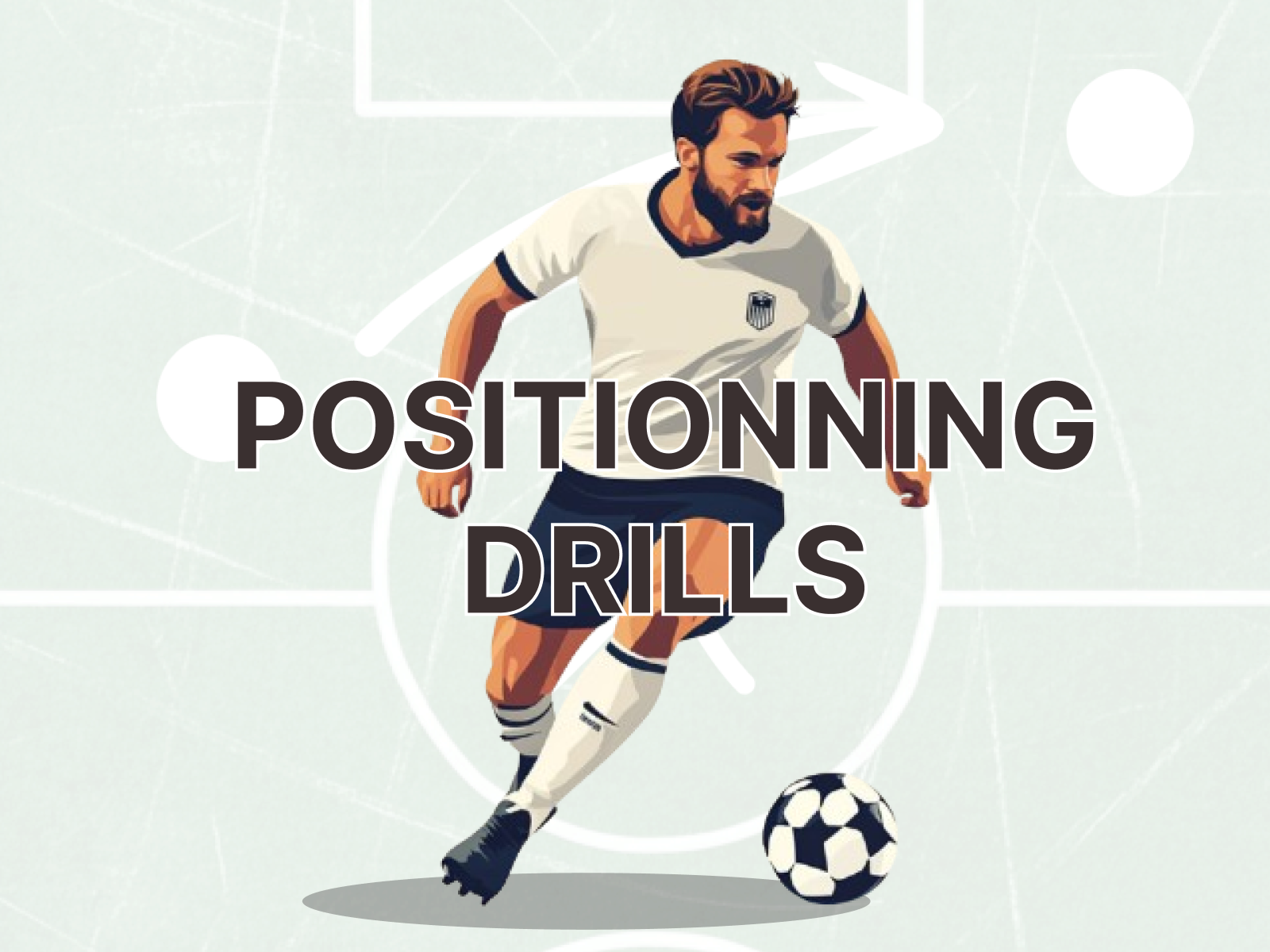In soccer, the ability to be in the right place at the right time often dictates the outcome of a game. This is the essence of proper positioning, a fundamental skill that underpins both individual player effectiveness and overall team success. While dazzling dribbles and powerful shots grab headlines, a team's prowess in maintaining optimal positions, both with and without the ball, is what truly sets them apart.
Effective positioning allows players to anticipate plays, close down passing lanes, create dangerous attacking opportunities, and recover defensively with speed. It transforms a collection of individuals into a cohesive unit. This article explores the critical importance of soccer positioning and provides practical drills to help players and teams master this vital aspect of the game.
Why is Proper Soccer Positioning Crucial?
Understanding why positioning matters is the first step toward mastering it. Good positioning is not just about standing in a particular spot, it is about understanding the flow of the game, anticipating where the ball or opponents will go, and moving proactively to gain an advantage. Let us explore some key reasons why this skill is indispensable.

For instance, in defense, players with strong defensive positioning can effectively cut off passing options, forcing opponents into less desirable areas of the field. Imagine a central defender stepping up to intercept a through ball rather than being caught flat-footed behind the play. This proactive movement prevents a dangerous scoring opportunity. Similarly, on offense, players who understand attacking positioning create space for themselves and their teammates, making it easier to receive passes and launch attacks. Consider a winger making a perfectly timed run into the channel, pulling a defender out of position and opening up a passing lane for a teammate.
Beyond individual actions, proper positioning fosters team cohesion. When every player understands their role and where they need to be in relation to the ball, their teammates, and the opposition, the team operates like a well-oiled machine. This reduces defensive vulnerabilities and maximizes offensive potential. It also conserves energy, as players are not constantly scrambling to recover from being out of position, allowing them to remain effective throughout the entire match.
Fundamental Principles of Effective Positioning
To truly grasp positioning, players and coaches must understand the core principles that govern it. These are not rigid rules but flexible guidelines that adapt to the ever-changing dynamics of a soccer match.
Cover and Balance is a cornerstone of defensive positioning. It involves players providing support for their teammates who are directly challenging an opponent. For example, if a defender steps out to pressure the ball, a teammate must drop back slightly to cover the space that has been vacated. This prevents a simple pass from bypassing the initial defender and creating a scoring chance. It is like a safety net, ensuring no area is left unprotected.
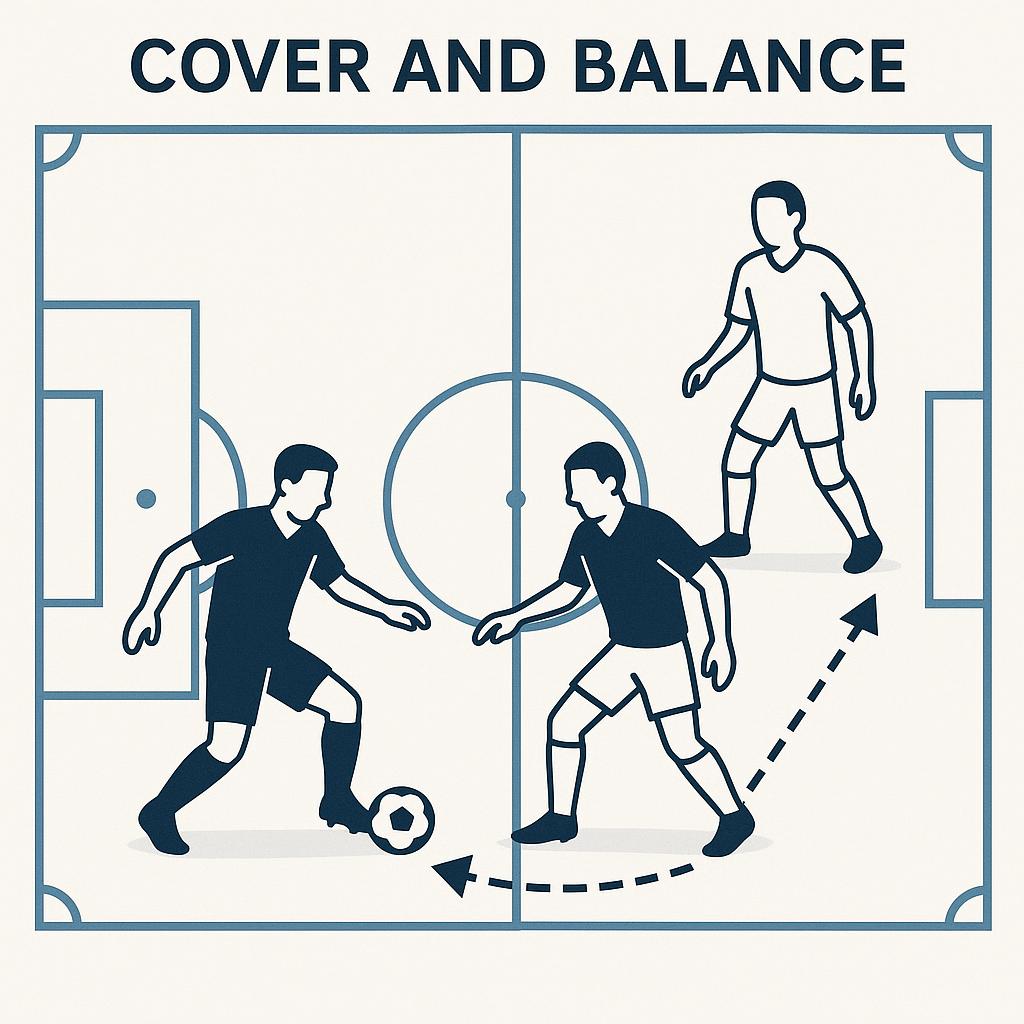
Another vital principle is Compactness. When defending, a team should aim to reduce the space available to the opposition in central areas. This means players stay relatively close to each other, creating a tight defensive block. This forces opponents wide or encourages long, less accurate passes. Think of it like building a strong wall, making it difficult for anyone to break through the middle.
Conversely, in attack, the principle of Spreading Out or creating width and depth is crucial. Players should position themselves to maximize the playing area, stretching the opposition defense and creating gaps. This means wingers stay wide, fullbacks push up, and midfielders look for spaces between the lines. It is like expanding a net to catch more fish, making it harder for defenders to mark everyone.
Finally, Anticipation and Awareness are not just principles but mental attributes. Players must constantly observe the ball, their teammates, and opponents to predict the next play. This allows them to move proactively into optimal positions, whether to intercept a pass, receive a pass, or block a shot. It is about playing a step ahead, like a chess master predicting the opponent's moves.
Practical Drills for Mastering Positioning
Now that we have explored the core principles, let us put them into practice. Here are three effective drills you can use to improve your team's positioning. These drills are perfect for implementing with an app like SPLY, allowing you to visually demonstrate the movements and tactics.
1. Zonal Defensive Shape Drill
This drill helps your team understand how to maintain a compact defensive shape and shift collectively. It is all about teamwork and understanding your role within the defensive unit.
Setup:
- Mark out a square or rectangular area, for example, 30x20 yards.
- Divide players into two teams, one attacking, one defending.
- The defending team starts inside the marked area. The attacking team has a few players outside, passing the ball around the perimeter.
Execution:
- The attacking team keeps possession by passing the ball around the outside of the area. They cannot enter the grid.
- The defending team, often starting with 4-6 players, must maintain a compact shape, shifting as a unit according to the ball's position.
- When the ball moves from one side to the other, the entire defensive unit must shift together, ensuring no large gaps appear.
- Coaches can call out directions or specific player roles to emphasize movement. The goal is not to win the ball but to deny central penetration and force the attackers wide.
Coaching Points:
- Communication is key: Encourage players to talk, calling out "shift" or "cover."
- Connected movement: Players should move in unison, like an accordion, rather than individually.
- Body shape: Defenders should be angled to see both the ball and their direct opponent.
- No central penetration: Emphasize closing down the middle of the pitch.
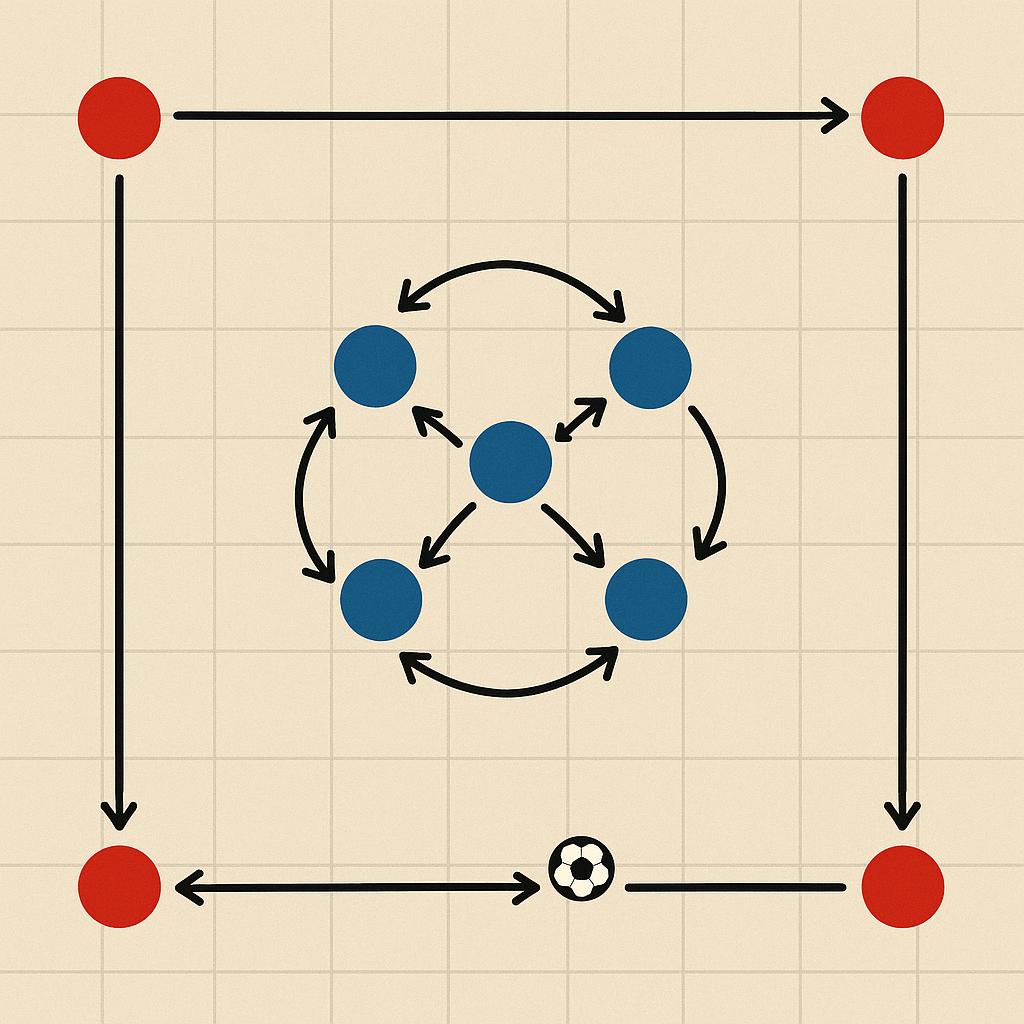
2. Overlapping Runs and Space Creation
This drill focuses on attacking positioning, specifically how players can create space for themselves and others through intelligent off-the-ball movement, like overlapping runs.
Setup:
- Set up half a pitch or a large rectangular area, with a goal at one end.
- Divide players into groups of 3-4 attackers against 1-2 defenders.
- Start with the ball in a wide position, perhaps with a midfielder or a fullback.
Execution:
- The drill begins with a pass to a wide player.
- An overlapping player, typically a fullback or a winger, makes a timed run around the player with the ball.
- The player with the ball has the option to pass to the overlapping player or to a central attacking player who has moved to create space.
- Defenders try to intercept or block passes. The objective is to work the ball into a scoring opportunity through effective positioning and movement.
- Encourage players to make multiple runs and adjust their positions based on where their teammates are moving.
Coaching Points:
- Timing of runs: Runs should be made when space opens up, not too early or too late.
- Communication: Players should call for the ball or indicate their run.
- Awareness: Players without the ball should be constantly looking for space and anticipating passes.
- Varying runs: Encourage different types of runs, like diagonal, straight, or checking runs.
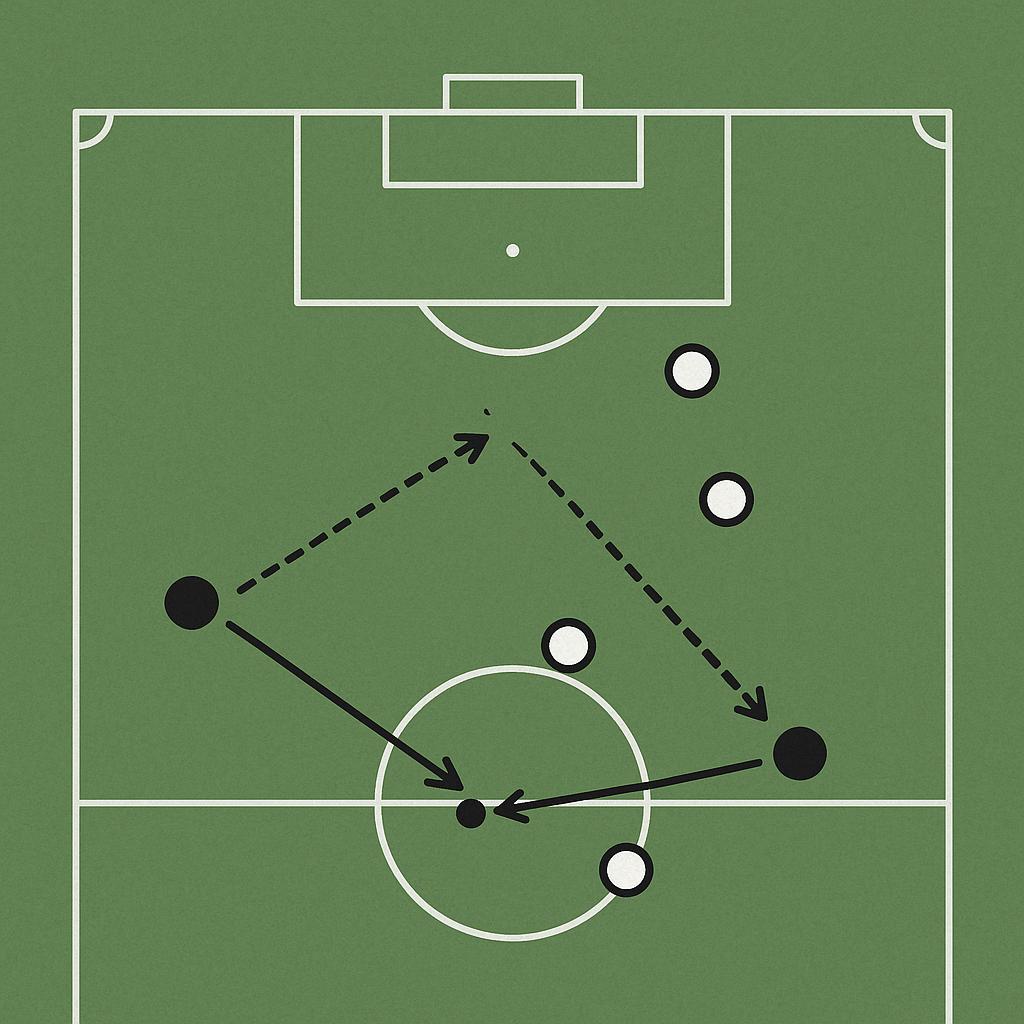
3. Transition Positioning Game (2-Way Flow)
This drill helps players rapidly adjust their positioning when possession changes, crucial for modern soccer. It combines both offensive and defensive positioning.
Setup:
- Mark a central playing area, for example, 40x30 yards.
- Place two small goals or target zones at opposite ends of the area.
- Divide players into two teams, for example, 6v6.
Execution:
- Teams play a regular small-sided game with a strong emphasis on quick transitions.
- When a team wins possession, they must immediately transition from a defensive mindset to an attacking one, spreading out and looking to score in their opponent's goal/target zone.
- When a team loses possession, they must immediately transition from an attacking mindset to a defensive one, compacting and attempting to win the ball back or defend their goal.
- The drill emphasizes players' ability to recognize the change in possession and adjust their positioning accordingly, both individually and as a team.
Coaching Points:
- Immediate reaction: Players should react instantly to changes in possession.
- Defensive shape on loss: When the ball is lost, quickly recover and get compact.
- Attacking shape on win: When the ball is won, quickly spread out and look for penetration.
- Heads up: Encourage constant scanning to see where teammates and opponents are.
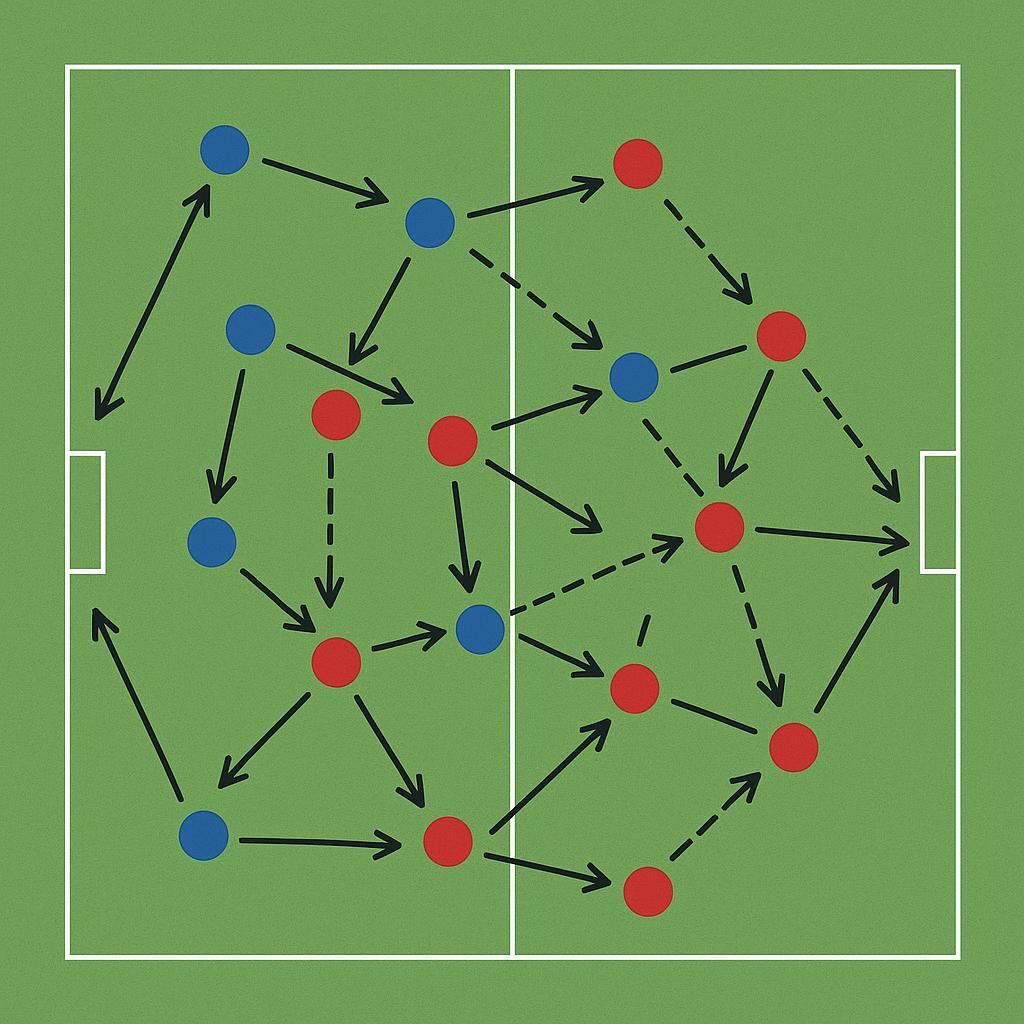
Mastering positioning takes time, practice, and a keen understanding of the game's flow. By incorporating these principles and drills into your training, you will see a significant improvement in your team's ability to play as a cohesive unit. Remember, with SPLY, you can easily design and share these drills, making it simpler for your players to visualize and understand their roles on the field. Start implementing these today and watch your team's tactical intelligence soar.
